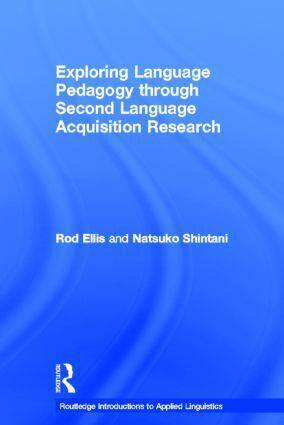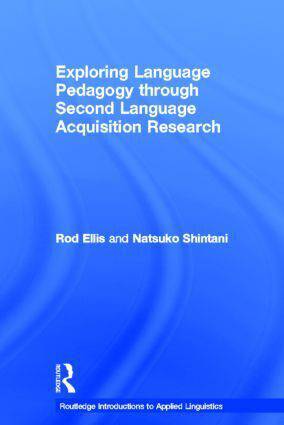
- Retrait gratuit dans votre magasin Club
- 7.000.000 titres dans notre catalogue
- Payer en toute sécurité
- Toujours un magasin près de chez vous
- Retrait gratuit dans votre magasin Club
- 7.000.0000 titres dans notre catalogue
- Payer en toute sécurité
- Toujours un magasin près de chez vous
Exploring Language Pedagogy Through Second Language Acquisition Research
Rod Ellis, Natsuko ShintaniDescription
Routledge Introductions to Applied Linguistics is a series of introductory level textbooks covering the core topics in Applied Linguistics, primarily designed for those beginning postgraduate studies, or taking an introductory MA course as well as advanced undergraduates. Titles in the series are also ideal for language professionals returning to academic study.
The books take an innovative 'practice to theory' approach, with a 'back-to-front' structure. This leads the reader from real-world problems and issues, through a discussion of intervention and how to engage with these concerns, before finally relating these practical issues to theoretical foundations. Additional features include a glossary of key terms, and discussion questions.
Following the back-to-front approach of the series, the book takes problematic issues in language pedagogy as its starting points. These are then examined in terms of second language acquisition. Each chapter begins with a look at the pedagogical proposals found in teacher guides and then asks 'Do these proposals accord with what we know about how languages are acquired?' Pedagogical topics covered include teaching methods, syllabus design, explicit instruction, comprehension versus production-based instruction, task-based instruction, authentic materials, the role of the learners' first language in the classroom, error correction and catering for individual differences.
Including a glossary of key terms and questions for discussion at the end of each chapter, and assuming no prior knowledge of second language acquisition, this is the ideal text for all students studying language teaching methods, language teacher education, English teaching methodology and second language acquisition modules in advanced undergraduate and postgraduate/graduate TESOL and Applied Linguistics courses.
Spécifications
Parties prenantes
- Auteur(s) :
- Editeur:
Contenu
- Nombre de pages :
- 400
- Langue:
- Anglais
- Collection :
Caractéristiques
- EAN:
- 9780415519700
- Date de parution :
- 13-08-13
- Format:
- Livre relié
- Format numérique:
- Genaaid
- Dimensions :
- 183 mm x 254 mm
- Poids :
- 639 g

Les avis
Nous publions uniquement les avis qui respectent les conditions requises. Consultez nos conditions pour les avis.






